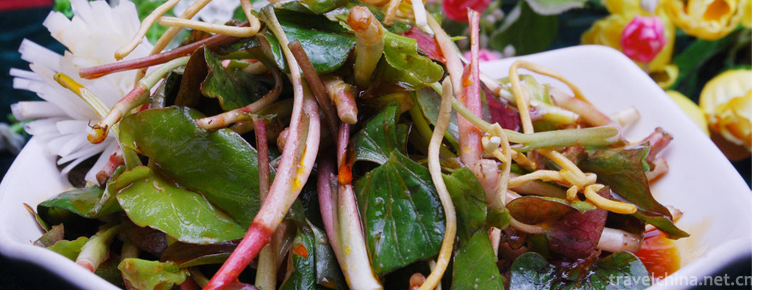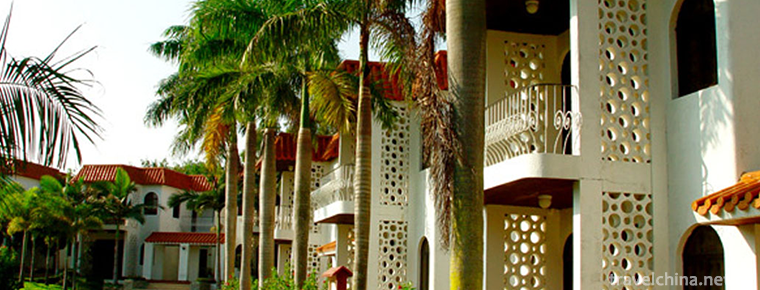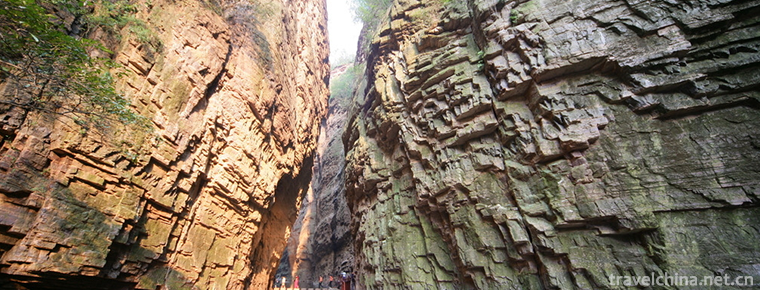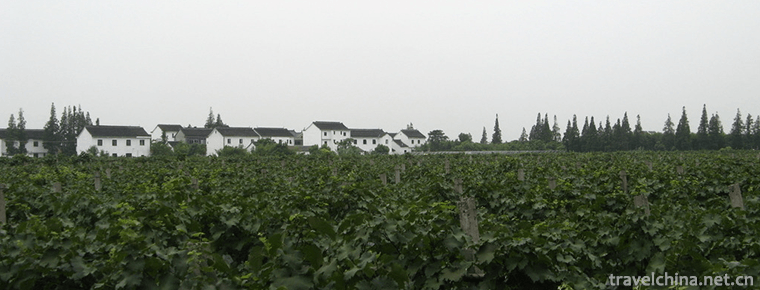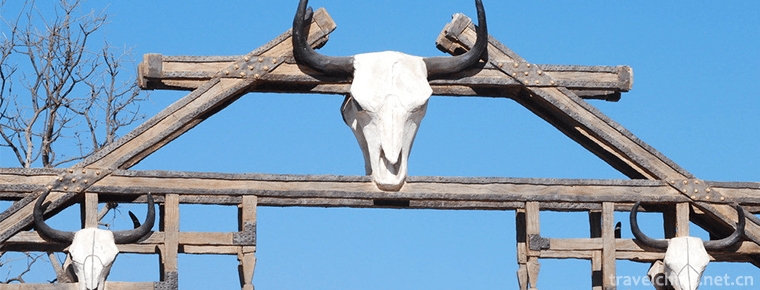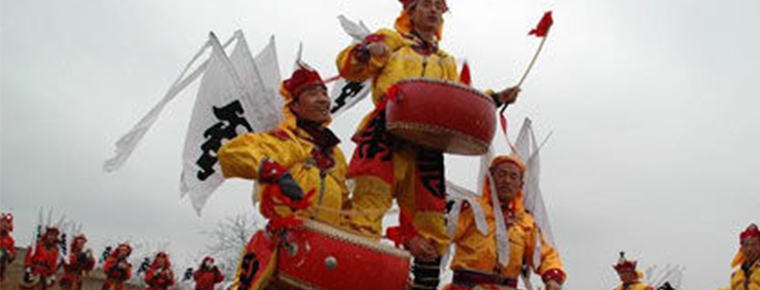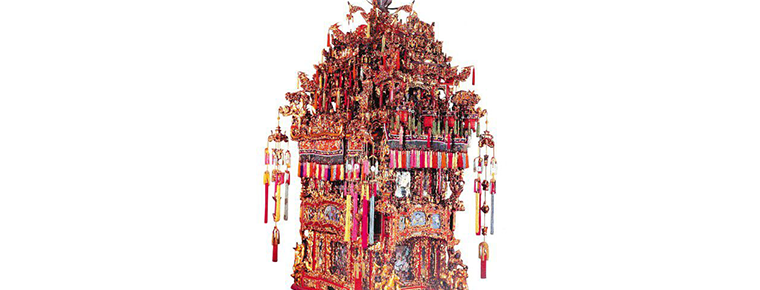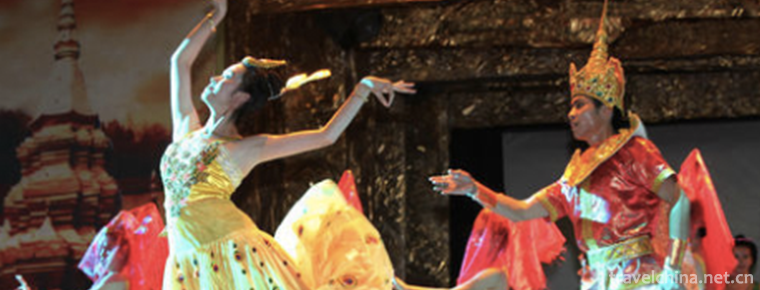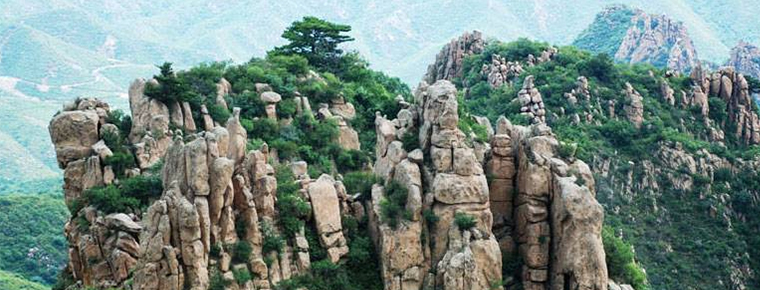Bi Sheng
Bi Sheng
Bi Sheng (about 971 years to 1051) was promoted to Hubei, Huanggang, Hubei. Yingshan County One of the great inventors of ancient China, the inventor of the five great ancient inventions of ancient China, was the inventor of "movable type printing", one of the four great inventions of ancient China. The invention of movable type printing was more than 400 years earlier than the German Gutenberg invented the metal movable type printing.
Paul Mauriat's History
Bi Sheng (about 971-1051) was born in Qishui County, Qizhou, Huainan Road, Northern Song Dynasty, and invented movable type printing in Song Renzong's Qingli years. The invention of Bi Sheng movable type printing is a great revolution in the history of printing. Four great inventions of ancient China One of them has opened up a broad road for the development of Chinese culture and economy, and has made a significant contribution to the development of world civilization.
The early method of printing is to print pictures and engraving on wooden boards and print them with ink and ink. Today, the wooden board watermark is still used by this method. woodblock printing "
Bi Shengchu is a printing shop worker who specializes in manual printing. In his printing practice, he knew the difficulties of engraving printing, conscientiously summed up his predecessors' experience and invented movable type printing. Shen Kuo's method Mengxi pen conversation There are specific records.
From thirteenth Century to nineteenth Century, movable type printing invented by Bi Sheng spread all over the world. People all over the world call Bi Sheng a great revolutionist in the history of printing. About Bi Sheng's life story, and his invention of the movable type version, besides Shen Kuo's record in the book "Mengxi Bi Tan", there were no second documents.
Shen Kuo only said he was a cloth man, and his native place and life had not been explained at all. The so-called "cloth" is literally understood by ordinary people who have never been officials. There has been a lot of speculation about Bi Sheng's career before, but the most reliable claim is that Bi Sheng should be a craftsman who works in woodblock printing. Because only those who are familiar with or skilled in engraving can become inventors of movable type editions. Owing to Bi Sheng's longstanding engraving work, he found the biggest shortage of engraving.
The point is to re engrave a copy of every book, not only for a long time, but also to increase the cost of printing. If you use the movable type version, you only need to engrave a movable type, then you can print any book, and the movable type can be used repeatedly. Although the work of making movable type is larger, it is very convenient to print books later. It was under this revelation that Bi Sheng invented the movable type version.
From Mengxi Bi Tan, we can see that Bi Sheng's letterpress printing is not groundless, but is based on previous printed books. The description of the process of letterpress printing is also an important asset for the study of future generations.
In 1990, Bi Sheng monument was found in Bijia Ao, five Gui Village, Yingshan, Hubei.
Main achievements
Bi Sheng invented the invented glue type and wood movable typesetting, which is the development of Chinese printing.
A fundamental reform is a scientific summary of the long term practical experience of the Chinese working people and a great contribution to the cultural exchanges between China and other countries in the world.
Before that, only copying, rubbing and engraving printing were cumbersome, laborious and time-consuming. They were not only difficult to store, but also difficult to correct. The movable type printing method invented by Bi Sheng is simple, flexible and convenient. The procedure is as follows: first, use the glue to make a single word with uniform specifications, burn it hard with fire, make it become a movable type of clay, then classify it in wooden frame, and usually use several words to spare several or dozens of words, so as to prepare for typesetting. When making typesetting, use a piece of iron plate with a frame as bottom support, and apply a layer of mixture made of pine resin, wax and paper ash, then pick up the needed glue from the spare wooden frame one by one, and put it into the frame, then fill it up to become a version, then use the fire to bake. When the medicament is slightly melted, it will flatten the tablet with a flat plate. After the medicine is cooled and solidified, it will become a version. When printing, just brush the ink on the plate, apply the paper and add some pressure. After printing, use the torch to bake and gently shake. The movable type of the glue will fall off the iron plate and be reused next time.
Methods: the blank with uniform specifications was made from glue, and the reverse word was engraved at one end. The height of the word protuberance was the same as the thickness of the edge of the copper coin. It was hardened by fire and became a single type of glue. In order to meet the needs of typesetting, there are usually several or even dozens of commonly used words, so that they can be used in duplicate in the same edition. If you encounter unfamiliar words, if you are not prepared, you can follow them. In order to facilitate picking, put the glue in the wooden grid according to the rhyme classification and label it with a strip of paper. After typesetting, pick up the needed glue and put them into the box one by one. Fill up a box and become a version, then use fire to bake.
Bake, wait for the medicine to melt slightly, use a flat plate to flatten the literal, the medicine cooling and solidifying, then become the version. When printing, just brush the ink on the plate, cover the paper and add some pressure. In order to be able to print continuously, two iron plates, one version of the brush and another version of the two edition are used alternately. After printing, use the torch to bake and gently shake with your hands. The movable type can be dropped off the iron plate, and then put back into the original wooden frame according to the rhyme, so that it can be reused next time. Bi Sheng also experimented with wood type printing. Due to the uneven density of wood grain, difficult fabrication, the deformation of wood movable type after being washed, and the difficulty of separating them from the chemicals, Bi Sheng did not use it.
Bi Sheng's glue moved first to North Korea, called "tao yao character". The stereotyped printing in the Tang Dynasty was very popular in China and spread to Korea, Japan, Vietnam, Philippines, Iran and other countries in thirteenth Century. In fifteenth Century, the movable plate was sent to Europe. In 1456 ad, Gordon fort, Germany, used movable typeface to mark the fort Gordon, the first movable type printed in Europe, four hundred years later than the movable type printing in China. Movable type printing was rapidly spread to other more than 10 countries after Germany, prompting the Renaissance. In sixteenth Century, movable type printing was passed to Africa , America , Russia Moscow was introduced into Australia in nineteenth Century.
Anecdotes
Bi Sheng unreservedly introduced his invention to his younger brothers and sisters. He first made delicate clay into small squares, carved convex back words one by one, burned them with fire, and placed them in wooden lattices in accordance with finals. Then put a binder (rosin, wax and paper ash) on a piece of iron plate, and print it out one by one in accordance with paragraphs, and then round the iron frame and heat it with fire. When the adhesive is slightly cooled, flatten the plate with a flat plate and cool it completely. After printing, burn the plate with the fire, melt the adhesive, remove the movable type, and save the next typesetting.
Teachers and brothers could not help but praise. A little brother said, " Tripitaka "More than 5000 volume, carved 130 thousand boards, a room can not be loaded, how many years of painstaking efforts! If you use your brother's method, you will be able to finish it in a few months. Brother, how did you come up with such a clever way? " "My two sons taught me!" Bi Sheng said. "Your son? How can it be? They will only "get married."
"You are right! This is the way to get married. Bi Sheng smiled and said, "before last year's Tomb Sweeping Day, I brought my wife and children back to their hometown to worship their ancestors. One day, the two sons played with each other, and made clay pot, bowl, table, chair, pig, and man with their clay. My eyes suddenly lit up. At that time, I thought, why don't I come to play with the family? Ha-ha! Isn't this what my son taught me?
The brothers also laughed. "But this family has been played by all the children. The brothers have seen it. Why is it that you invented movable type printing?" Or the little brother asked. After a while, the master opened his mouth: "in your teacher's brother, Bi Sheng is most ambitious. He has long been thinking about new ways to improve work efficiency. It's not a cold day. " "Oh!" The brothers of the division burst into tears.
Kinship members
Wife: Li, the magic name.
Son: Bi Jia, Bi Wen, Bi Cheng, Bi Rong
Sun Tzu: Bi Wenxian, Bi Wenbin and Bi Wenzhong.
Character Memorial
A burial
Bi Sheng is the inventor of movable type printing, one of the four great inventions of ancient China. However, the only historical record of Bi Sheng is the four words in Shen Kuo's Mengxi Bi Tan: Bai Yi Bi Sheng. For thousands of years, Bi Sheng's identity has always been a mystery.
In the autumn of 1990, a tombstone was excavated at the foot of the sleeping lion mountain in five GUI Dun village, Yingshan County, Hubei province. According to the textual research, it was the tombstone of Bi Sheng. 3 kilometers west of the cemetery is Bijia shop, and the Xiao Jia Da house, one kilometer south, is handed down by Bi Zai Xiang, and fifteen kilometers east.
Bi Sheng Forest Park
Yingshan Bi Sheng Forest Park is located in Wenquan city. It is the last peak of the middle branch mountain in the main peak of the Dabie Mountain. It is also the highest point in the middle branch of the city. The park is in the east of the science and technology finance and Trade Development Zone, the South Wang Hong Nan economic corridor, the West leading industrial zone, the north and the cloud mountain tea park, the park is only 1 kilometers away from the Wu Ying highway, the existing forest area of Bi Sheng Forest Park is 8500 mu, the new repair park has 9.8 kilometers of circular roads, and 31 pavilions are built. Among them, the statue of Bi Sheng, the Bi Sheng Memorial Hall, the open-air Buddha and the cock amusement park have already received tourists. "Bi Sheng" We are exploring the expansion of the culture of the garland temple, the newly built movable type promenade, the antique District, the zoo, the park hotel, and the improvement of service facilities to build a famous garden in Eastern Hubei.
Bi Sheng Avenue
In the 90s of last century, Bi Sheng was identified as five GUI Dun village in Yingshan County by archaeological experts. In order to remember and commemorate Bi Sheng and carry forward Bi Sheng culture, Yingshan county invested about 5000000 yuan to build Bi Sheng Park and Bi Sheng Memorial Hall under the support of the state and Hubei provincial cultural relics department. A number of roads, bridges, squares, restaurants, schools, products and enterprises named after Bi Sheng mushroomed. Bi Sheng Avenue (6 lanes) is about 3900 meters long, from South Chong fan, and finally Bi Sheng Avenue, via Bi Sheng square, Bi Sheng middle school, etc. Today, Bi Sheng has become the pride of the local people in Yingshan.
Film drama
In the early 90s of last century, a grass-roots cadre in Yingshan County of Hubei discovered an ancient tombstone. In January 10, 2015, the theme of the documentary is the mystery of Bi Sheng's tombstone. A press conference was held in Beijing. The movie was first broadcast on January 16, 2015 at 21:59 on the CCTV science and education channel (CCTV10).
In September 2009, Bi Sheng, the famous Huangmei Opera actor Yu Ying, Cheng Cheng, who was choreographed by the Huangmei opera troupe of Yingshan County, participated in the seventh Huangmei Opera Festival of Hubei Province, and won 9 awards.
In late December 2014, the great original Huangmei Opera "movable type Bi Sheng", a famous Huangmei opera performance artist and Chinese Drama Plum Blossom Prize winner Zhang Hui, starred in the Huanggang cultural and Arts Center. This drama is another highlight of the Hubei Huangmei Opera theater after the Dongpo, Li Siguang and Li Shizhen, once again taking Huanggang's cultural celebrities as the theme.

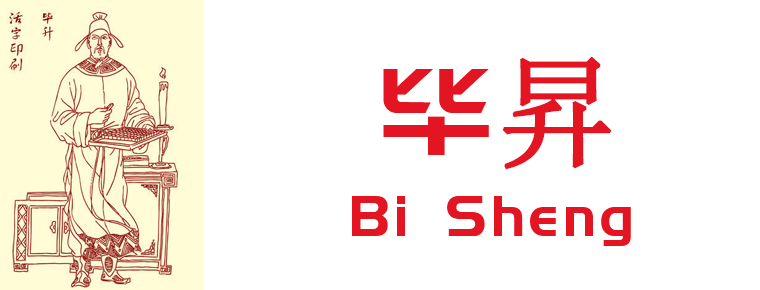
Bi Sheng
-
Houttuynia cordata Thunbherba houttuyniae
Houttuynia cordata Thunb. is a kind of herbal medicine collected in the Chinese Pharmacopoeia
Views: 282 Time 2018-10-12 -
Ailao Mountain
Ailao Mountain, located in the middle of Yunnan Province, China, extends south of Yunling Mountains. It is the boundary between Yunnan-Guizhou Plateau and Hengduan Mountains. It is also the watershed
Views: 483 Time 2018-11-01 -
Blue Moon Bay Hot Spring Resort
Lanyuewan Hot Spring Resort is the largest four-star garden-style foreign-related hotel and national AAAA-level tourist scenic spot in Western Guangdong. It is located in the quiet "Guangzhou Bay
Views: 204 Time 2019-01-29 -
Longtan Grand Canyon Scenic Area
Longtan Grand Canyon Scenic Area is the core scenic area of national AAAAA level scenic area, National Geological Park and Daimeishan World Geological Park. It is a Canyon Scenic
Views: 131 Time 2019-02-06 -
Malu Grape Theme Park
Malu Grape Theme Park is located in Malu Town, Jiading District, Shanghai. It is a grape industry base and agricultural tourism demonstration site that integrates grape planting, production, scientifi
Views: 135 Time 2019-02-06 -
Lion Peak in Meiling
Lion Peak in Meiling is a combination of Lion Peak, Panxi Lake and Wangshijian. The mountain is like a squatting lion, so it is called Lion Peak. Lion Peak in Meiling is only 260 meters
Views: 335 Time 2019-02-07 -
Ancient Town of Yi Nationality
The ancient town of Yi people is located in the north of Yongan Avenue, the west of Sun Li Park, the east of Longchuan River and the south of Chuda Expressway in Chuxiong Economic and Technological De
Views: 220 Time 2019-03-04 -
Luochuans drums
Luochuan Yigu, a traditional dance in Luochuan County, Shaanxi Province, is one of the national intangible cultural heritage.
Views: 164 Time 2019-05-15 -
Ningbo Zhujin lacquer wood carving
Also known as "Golden Lacquer Wood Carving", it is a traditional Chinese craft. Composition features mainly draw on the advantages of Chinese folk paintings and literati landscape flowers an
Views: 175 Time 2019-06-08 -
Shaoshutun and Munona
Manmaisankang National AAA Scenic Area, where every day the love story between Zhaoshu Tun and the Peacock Princess Munona, beautiful music, more than 100 peacocks falling from the sky, the beautiful
Views: 129 Time 2019-07-25 -
Daheishan Forest Park
Daheishan Forest Park is located in Wuben Township, Renhe District, Panzhihua City, Sichuan Province. From the center of Panzhihua bingcaogang River Panshan 58 kilometers, through Guaziping, Lanjian mine and Wuben township.
Views: 89 Time 2020-10-15 -
Suining first industry
In 2019, the total output value of agriculture, forestry, animal husbandry and fishery in Suining will reach 30.998 billion yuan, an increase of 3.4% over the previous year.
Views: 343 Time 2020-12-16
